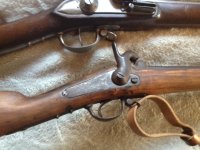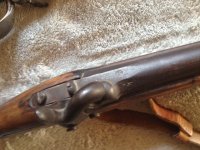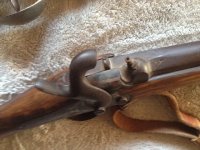Cannonman11
Inactive
I just acquired a scaled down version of the Model 42 French or Belgian musket. It is definitely under sized with a bore about .58 caliber wth a correct fitting angular bayonet. It appears to have been made for a boy but has all the features of its full scale counterpart.. Why would a musket like this be made and who would it have been made for? Any ideas?



